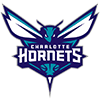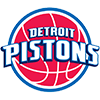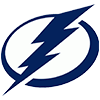This is our secondary Waiver Wire article for the week. The primary Waiver Wire article runs Tuesdays throughout the season, while this version run Thursdays. The purpose of this edition is to provide a deep dive into the free-agent pool. Most of the players listed have limited fantasy value, but they will be useful to fantasy managers who need to plug holes or have bench space to stash upside plays. DFS enthusiasts will also find it useful as a broad overview of under-the-radar potential producers.
The list below includes players rostered in no more than 50-55 percent of Yahoo leagues and is listed in order of preference based on half-point per reception scoring and a 12-team league. Depending on your league's scoring and roster settings, certain players might warrant higher consideration than what is listed. Each player's listed roster percentage is based on Tuesday's Yahoo statistics, to give a general sense of availability for a given week.
QUARTERBACK
Gardner Minshew, Jaguars (30 percent) - Fresh off dismantling a much-hyped Colts defense, it's clear that Minshew didn't get the "tank for Trevor" memo. The Titans offer another tough matchup, but if Minshew puts forth another strong showing, he'll enter the mix as a season-long starter.
Teddy Bridgewater, Panthers (22 percent) - His Panthers debut would have looked better had D.J. Moore not dropped a catchable TD pass, but Bridgewater still salvaged his fantasy day with a deep TD to Robby Anderson and modest rushing totals. He looks like an
This is our secondary Waiver Wire article for the week. The primary Waiver Wire article runs Tuesdays throughout the season, while this version run Thursdays. The purpose of this edition is to provide a deep dive into the free-agent pool. Most of the players listed have limited fantasy value, but they will be useful to fantasy managers who need to plug holes or have bench space to stash upside plays. DFS enthusiasts will also find it useful as a broad overview of under-the-radar potential producers.
The list below includes players rostered in no more than 50-55 percent of Yahoo leagues and is listed in order of preference based on half-point per reception scoring and a 12-team league. Depending on your league's scoring and roster settings, certain players might warrant higher consideration than what is listed. Each player's listed roster percentage is based on Tuesday's Yahoo statistics, to give a general sense of availability for a given week.
QUARTERBACK
Gardner Minshew, Jaguars (30 percent) - Fresh off dismantling a much-hyped Colts defense, it's clear that Minshew didn't get the "tank for Trevor" memo. The Titans offer another tough matchup, but if Minshew puts forth another strong showing, he'll enter the mix as a season-long starter.
Teddy Bridgewater, Panthers (22 percent) - His Panthers debut would have looked better had D.J. Moore not dropped a catchable TD pass, but Bridgewater still salvaged his fantasy day with a deep TD to Robby Anderson and modest rushing totals. He looks like an ideal low-floor, low-upside option in 2QB formats.
Ryan Tannehill, Titans (45 percent) - Tannehill has 18 TDs and just two INTs since Week 10 of last season, and he had more passing attempts during the season opener than he did in any game in 2019. With a great matchup against the Jaguars on deck, even if Tannehill's volume shrinks he should still finish with viable fantasy numbers.
Jimmy Garoppolo, 49er (51 percent) - Garoppolo may be dealing with a banged-up WR corps, but he still has electric weapons like Raheem Mostert and George Kittle (leg) who are capable of turning easy passes into huge gains. The 49ers have two soft secondaries coming up in the Jets and Giants. Check Kittle's status before starting Jimmy G, however.
Kirk Cousins, Vikings (34 percent percent) - Cousins salvaged his Week 1 fantasy performance in garbage time, which included a respectable 34 rushing yards. That's not a pattern that seems sustainable for fantasy success, but Cousins will have another opportunity to put up numbers against a Colts secondary that Gardner Minshew recently dissected.
Derek Carr, Raiders (17 percent) - The early involvement of Henry Ruggs last week was encouraging for Carr's future fantasy outlook. Had the rookie not gotten banged up midway through his debut, the Raiders might have done more through the air rather than leaning entirely on Josh Jacobs.
Mitchell Trubisky, Bears (6 percent) - Trubisky is quietly a solid No. 2 option in 2QB leagues, at least against poor defenses such as the Giants, which he gets this week.
RUNNING BACK
James Robinson, Jaguars (56 percent) - Robinson should be rostered in all but the shallowest of formats. For a convincing list of arguments in his favor, look no further than Jerry Donabedian's Hidden Stat Line Backfield Breakdown.
Nyheim Hines, Colts (22 percent) - Hines was clearly involved as a key piece of Indianapolis' offense even before Marlon Mack (Achilles) went down, and his usage should only go up now. Don't count on Hines to continue outproducing Jonathan Taylor, but he should remain a reliable option with his work on passing downs.
Benny Snell, Steelers (18 percent) - Snell and Clyde Edwards-Helaire were the only two RBs to rush for 100 yards Week 1. Just as we all predicted. The second-year pro looked comparable to James Conner (ankle) between the tackles, though he wasn't involved in the passing game. If Snell is given the opportunity to lead Pittsburgh's backfield he'll be in play as a weekly RB2, and the oft-injured Conner may well give him that chance.
Myles Gaskin, Dolphins (1 percent) - Gaskin leading Miami in rushing was a surprise, but he did look like the team's best option Sunday. Jordan Howard started and got the only goal-line carries, and Matt Breida won't allow Gaskin to hold a 100 percent backfield target share forever, but it looks like the second-year pro could get a real shot to win the lead role.
Malcolm Brown, Rams (28 percent) - Not only did Brown own 60 percent of Los Angeles' backfield snaps and score twice, he was clearly the team's best running back in Week 1. Cam Akers will keep getting chances, but Brown should continue to be viable for fantasy purposes.
Adrian Peterson, Lions (46 percent) - Peterson handled 58 percent of Detroit's carries Week 1 (plus three targets) despite just having joined the team, and he turned that opportunity into 114 total yards. D'Andre Swift will keep dominating targets and hurry-up situations, but Peterson looks cemented above Kerryon Johnson and might be the team's preferred pure runner. The 35-year-old is in play as a flex option this week against Green Bay.
Joshua Kelley, Chargers (14 percent) - Kelley wasn't immediately given opportunities, but he quickly impressed upon getting his first touch in the second quarter. He handled 36 percent of carries and substantial goal-line work, a trend which should repeat against Kansas City if Justin Jackson (quadriceps) can't shake his injury.
Frank Gore, Jets (4 percent owned) - Le'Veon Bell dominated the Jets' backfield up until he left the field, but he's now set to miss at least three weeks on IR. Gore has already been named the de facto starter, and La'Mical Perine is still (ankle) still hurt, but the veteran's value will be capped due to New York's poor offense.
Chase Edmonds, Cardinals (40 percent) - Edmonds falls into the category of "high-value handcuffs with flex viability even if the starter stays on the field." He won't score on a designed play every week, as he did in the opener, but Edmonds would be an immediate weekly starter if Kenyan Drake went down.
Tony Pollard, Cowboys (38 percent) - Ezekiel Elliott handled 92 percent of Dallas' carries, so Pollard's fantasy value clearly only comes as a handcuff.
Darrel Williams, Chiefs (23 percent) - Clyde Edwards-Helaire started his career on fire (7.4 YPC) and affirmed fantasy managers who drove him up draft boards, but struggles in short-yardage situations were a small blemish. Williams has historically been efficient in such scenarios, so he could have a chance to vulture high-value touches in a hot offense if things continue.
Carlos Hyde, Seahawks (19 percent) - Chris Carson (seven carries) started for Seattle, as expected, but Hyde (six) saw nearly the same amount of work, with Travis Homer (three) also working in. Scoring opportunities won't consistently go Hyde's way, as they did Week 1, but he likely will be involved in the offense each week.
La'Mical Perine, Jets (1 percent) - The rookie fourth-round pick will see immediate opportunities to push Frank Gore for work if he's healthy, with Le'Veon Bell (hamstring) out at least three weeks. The only problem is Perine didn't practice all last week due to an ankle injury, and he may still not be ready to go against San Francisco.
Peyton Barber, Football Team (4 percent) - Barber likely won't put forth another double-digit touchdown game, but his Week 1 usage (10 carries in the red zone) make him a fair option to score if your roster is put in the position to roll those dice. As the season goes on, though, Antonio Gibson should get more involved, and Bryce Love won't be a healthy scratch forever.
Jerick McKinnon, 49ers (11 percent) - Raheem Mostert dominated San Francisco's carries Week 1, but McKinnon had an equal number of targets (five). In addition to the one pass he caught for a score, McKinnon also got two carries inside the 10-yard line, which is encouraging. However, Tevin Coleman's marginal involvement was to some extent related to his sickle cell trait and San Francisco's poor air quality, so the backfield split could change Week 2.
Kalen Ballage, Jets (0 percent) - Ballage is in a similar category to Perine and Gore, but he shouldn't cost more than a single dollar of FAAB. If you're desperate at the RB position, Ballage likely will only be a complementary player while Bell is out, but his frame could make him the favorite for goal-line carries in New York.
Bryce Love, Football Team (6 percent) - Don't expect Love to be a healthy scratch for long. He'll have the opportunity to fight for snaps in a crowded committee when he does return, and it wouldn't be surprising to see him eventually beat out Peyton Barber.
WIDE RECEIVER
Mike Williams, Chargers (45 percent) - Mike Williams' low roster percentage is surprising, though less so when you factor in his recent shoulder injury. He's locked in, alongside Keenan Allen and Hunter Henry, to account for nearly all the non-backfield targets in Los Angeles' offense. No. 3 WR Jalen Guyton only saw one look Week 1 despite playing 64 percent of snaps.
Robby Anderson, Panthers (32 percent) - Not only did Anderson reward fantasy managers who trusted him Week 1 with a long TD, but his usage was encouraging. He and Curtis Samuel (31 percent) each drew eight targets compared to D.J. Moore's nine, making both fair options for production.
Parris Campbell, Colts (23 percent) - Campbell and T.Y. Hilton were the only WRs to account for at least 80 percent of snaps for Indianapolis Week 1. Campbell finished with the best receiving line (6-71-0) and showed immediate chemistry with Philip Rivers, who's previously shown an affinity for slot WRs.
Allen Lazard, Packers (43 percent) - Lazard didn't quite rack up the 96-yard receiving line that Marquez Valdes-Scantling did Week 1, but he did also haul in one of Aaron Rodgers' four scores. Moreover, Lazard's 87 percent snap share paint him as the only full-time WR aside from Davante Adams, so he should be more consistent than MVS.
Jalen Reagor, Eagles (38 percent) - There's reason to be optimistic that Reagor will grow more consistent as the season continues, especially once his shoulder injury is well behind him. If his Week 1 usage (144 air yards) is any indication, the rookie first-rounder already offers a high enough ceiling to warrant emergency consideration, even if the floor hasn't yet been established.
Preston Williams, Dolphins (38 percent) - No Dolphins receiver exceeded 50 yards Week 1, but it's encouraging to see that Williams played 90 percent of snaps in his first game back from an ACL tear. If DeVante Parker (hamstring) can't suit up against Buffalo, Williams could become Ryan Fitzpatrick's de facto WR 1 and end up peppered with targets. Of course, the Bills' defense has the potential to simply smother Miami.
Golden Tate, Giants (41 percent) - The combination of Tate (hamstring) missing Week 1 and Darius Slayton having a blow-up game could lead to the veteran being dropped in a number of leagues, and he was already evidently a fringe roster candidate. Once he's healthy, though, Tate will have a clear starting role and flex-worthy utility in PPR formats.
N'Keal Harry, Patriots (31 percent) - Harry's Week 1 stat line (5-39-0) could have looked much better, as he had a goal-line fumble for a touchback that should've been a score. If he cleans up his ball-security issues and general sloppiness, Harry should be given the opportunity to equal Julian Edelman's role in the passing game this season.
Russell Gage, Falcons (14 percent) - Gage isn't going to continue seeing identical targets to Julio Jones and Calvin Ridley, but in Atlanta's pass-happy offense he should have roster-worthy value in PPR formats. Hayden Hurst stands to gradually siphon looks from Gage as he continues to get up to speed in Atlanta's offense, until then Gage should retain modest big-game potential.
Corey Davis, Titans (5 percent) - Davis' 101 yards were more than A.J. Brown and Jonnu Smith combined in Week 1. He and Brown had identical usage in terms of targets, routes and snaps, and if that trend continues the gap between those two WRs might not end up nearly as wide as their respective ADP would suggest. I'm not crossing my fingers for DeVante Parker-style breakout, but Davis is easily worth an end-of-roster stash.
Marquez Valdes-Scantling, Packers (9 percent) - MVS managed to beat Allen Lazard's Week 1 receiving line, but he also played roughly 30 percent fewer snaps. Although MVS isn't yet ready to be a consistent producer in Green Bay — continued drop issues hint that he might never be — he'll always have the weekly upside to connect with Aaron Rodgers on a deep score. His role, at least, already looks more consistent than it was in 2019.
Laviska Shenault, Jaguars (12 percent) - Shenault only handled 62 percent of snaps at WR in his debut, but he also handled two plays out of the backfield and a direct snap. The rookie second-round pick will continue to be schemed all over the field, and the yards-after-catch abilities that allowed him to hit paydirt in his debut should allow him to continue carving out increasingly consistent looks. Shenault should be picked up before he officially emerges as the No. 2 weapon in Jacksonville.
Scotty Miller, Buccaneers (19 percent) - Miller's 73-yard Week 1 performance isn't likely to consistently repeat, as Mike Evans (hamstring) and Chris Godwin (concussion) won't often combine for less than 10 yards — injuries not withstanding. However, with both Evans and Godwin nicked up, Miller could be very much in play against the Panthers on Sunday.
Tre'Quan Smith, Saints (4 percent) - Michael Thomas can express as much optimism as he'd like about his high-ankle sprain, but it remains an injury that could seriously curtail his fantasy production for a number of weeks. Emmanuel Sanders and Smith will suit up as the Saints' starting WRs if Thomas is out. Smith has previously shown a propensity for blow-up games, so he could be useful in deep leagues.
James Washington, Steelers (13 percent) - Washington is clearly behind both JuJu Smith-Schuster and Diontae Johnson, and his Week 1 snap count reflects that reality. It's encouraging, though, that the Steelers ran 70 percent of snaps out of 11 personnel, and that Washington's occasional looks were quality enough to let him score. He's a fine boom-or-bust option in deep formats.
Quintez Cephus, Lions (1 percent) - Like Tre'Quan Smith, Cephus' only real intrigue is for deep leagues. Although his final Week 1 line wasn't too impressive, Cephus did handle a team-high 10 targets with Kenny Golladay (hamstring) sidelined, notably playing a larger role than Danny Amendola.
TIGHT END
Dallas Goedert, Eagles (56 percent) - Goedert's snap count was six percent less than that of presumed top TE Zach Ertz, but he commanded a five percent larger target share and managed about 80 more yards. Big games likely will oscillate between Goedert and Ertz on a weekly basis, with Ertz being more consistent, but Goedert is in good position to emerge as a legit back-end TE1 this season.
Logan Thomas, Washington (2 percent) - Thomas had a larger target share than Terry McLaurin in Week 1, and his lone TD exemplifies that he was Dwayne Haskins' go-to read in the red zone. He's a must-add for any TE-needy team, just on the off chance that this usage proves consistent. Even if Scary Terry retakes the lead target share for the rest of the season, as expected, there's room in this offense for Thomas to put up serviceable numbers as a streaming TE.
Chris Herndon, Jets (51 percent) - Herndon didn't do much Week 1, but his seven targets were second only to Jamison Crowder. The Jets may not field a watchable offense, but the short-term absence of Le'Veon Bell should increased Herndon's already solid target share, and he might be the favorite for red-zone looks.
Jimmy Graham, Bears (5 percent) - The Bears paid up for Graham and intend to use him. He played 80 percent of snaps in the opener and had nearly a 20 percent target share, including jump balls in the red zone. Allen Robinson was the only other full-time receiver for Chicago.
O.J. Howard, Buccaneers (18 percent) - Howard found the end zone in his debut with Tom Brady and notably doubled Rob Gronkowski in terms of both targets and receptions, but the fact that he only ran a route on 46 percent of dropbacks is less encouraging. It'll likely prove frustrating to predict which tight end will be fantasy relevant on a given week, but it's worth remembering that there were legitimate reason for OJH being so overhyped in 2019.
Greg Olsen, Seahawks (26 percent) - Olsen scored in the opener, but Will Dissly handling a 40 percent snap count despite it being his first game back from a severe injury doesn't bode well. Seattle's tight end rotation only stands to become more even, and less consistent, for fantasy purposes as the year goes on.


























